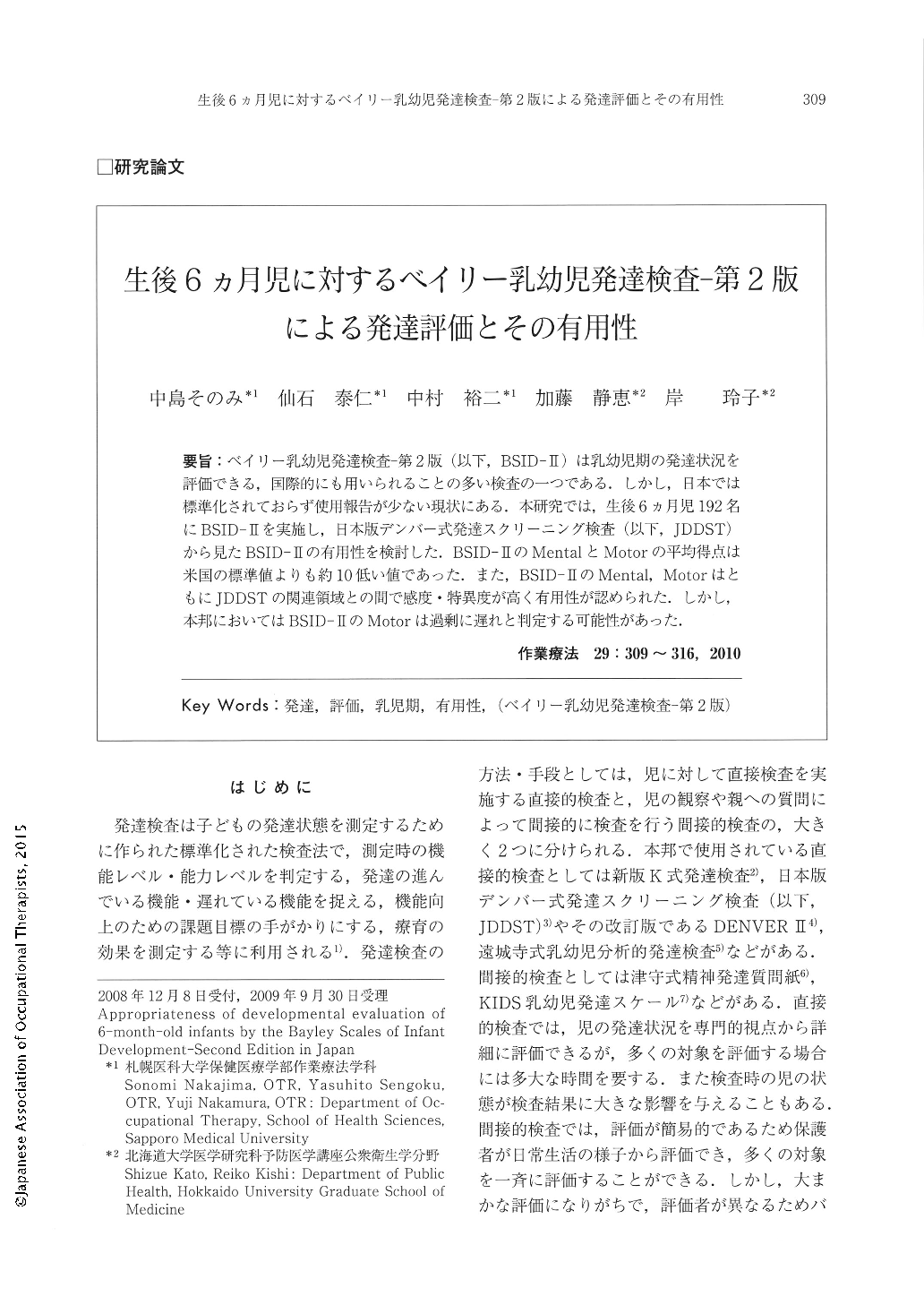5 0 0 0 OA ランゲンドルフ灌流心実験法
- 著者
- 中村 裕二 安東 賢太郎 杉山 篤
- 出版者
- 公益社団法人 日本薬理学会
- 雑誌
- 日本薬理学雑誌 (ISSN:00155691)
- 巻号頁・発行日
- vol.140, no.4, pp.166-169, 2012 (Released:2012-10-10)
- 参考文献数
- 3
ランゲンドルフ灌流心実験法は19世紀末にドイツの生理学者Oscar Langendorffによって開発された実験法である.摘出した心臓の大動脈にカニューレを挿入して冠動脈から心臓を灌流する手法であり,実験操作の簡便さと心臓に対する薬物の直接作用を評価できることから薬理学的作用の評価法として長く用いられてきた.モルモットを具体例として我々の研究室で行っているランゲンドルフ灌流心の標本作製と測定手法について概説する.標本作製の手順であるが,まずモルモットをペントバルビタールナトリウムで麻酔し,ヘパリンを静注後,心臓を摘出する.摘出した心臓の大動脈にカニューレを挿入して冠動脈から心臓を灌流し,ランゲンドルフ標本を作製する.ランゲンドルフ灌流心では心電図,灌流圧,灌流量,左室圧,有効不応期,単相性活動電位の測定が可能である.左室圧は左室内に生理食塩液を満たしたバルーンを挿入して測定する.バルーンの容積を調節することにより収縮末期の左室容積を設定ができ,任意の前負荷状態における等容性収縮を評価することができる.さらに単相性活動電位を用いると,薬物の催不整脈作用をより詳細に評価することが可能である.ここでは一般的な測定項目に加えてより詳細な電気生理学的指標およびそれらの測定に際しての注意点を紹介する.
- 著者
- 中島 そのみ 仙石 泰仁 中村 裕二 加藤 静恵 岸 玲子
- 出版者
- 日本作業療法士協会
- 雑誌
- 作業療法 (ISSN:02894920)
- 巻号頁・発行日
- vol.29, no.3, pp.309-316, 2010-06-15
要旨:ベイリー乳幼児発達検査一第2版(以下,BSID-Ⅱ)は乳幼児期の発達状況を評価できる,国際的にも用いられることの多い検査の一つである.しかし,日本では標準化されておらず使用報告が少ない現状にある.本研究では,生後6ヵ月児192名にBSID-Ⅱを実施し,日本版デンバー式発達スクリーニング検査(以下,JDDST)から見たBSID-Ⅱの有用性を検討した.BSID-ⅡのMentalとMotorの平均得点は米国の標準値よりも約10低い値であった.また,BSID-ⅡのMental,MotorはともにJDDSTの関連領域との間で感度・特異度が高く有用性が認められた.しかし,本邦においてはBSID-ⅡのMotorは過剰に遅れと判定する可能性があった.
1 0 0 0 OA 感電事故の発生とその防止
- 著者
- 中村 裕二 和田 剛 中瀬古(泉) 寛子 安東 賢太郎 杉山 篤
- 出版者
- 一般社団法人 日本不整脈心電学会
- 雑誌
- 心電図 (ISSN:02851660)
- 巻号頁・発行日
- vol.36, no.2, pp.118-120, 2016 (Released:2017-04-03)
- 参考文献数
- 6
1 0 0 0 OA 青森県における食品消費の実態 III : 津軽北地区における消費量
- 著者
- 五代儀 貴 中村 裕二
- 出版者
- 日本保健物理学会
- 雑誌
- 保健物理 : hoken buturi (ISSN:03676110)
- 巻号頁・発行日
- vol.37, no.2, pp.143-152, 2002-06
- 参考文献数
- 9
- 被引用文献数
- 3
This survey on daily food intake in the northwestern part (northern Tsugaru area) of Aomori Prefecture was a continuation of a previous survey conducted in the southeastern part (Sanpachi-Kamikita area) and southwestern part (southern Tsugaru area) of the prefecture. The 50 families surveyed were divided into three different groups of primary occupations: fishery worker, farmer, and "other occupations." The average total daily food consumption of the entire survey group was about 2,389 gram/day/person (g/d/p), and showed no significant seasonal variation. The consumption rates of marine, agricultural, and livestock products were around 276, 1,275 and 360 g/d/p, respectively, and were relatively constant the year around. However, the consumption rate of other products was 478 g/d/p and was slightly higher in the summer and lower in the winter. The proportions of marine, agricultural, and livestock products in total food consumption among all families were on the average approximately 12, 53, and 15%, respectively. The highest average daily food consumption recorded was 2,510 g/d/p and occurred in fishery workers' families, followed by 2,441 and 2,008 g/d/p in farming and other workers' families, respectively. The families of fishery workers showed the highest consumption of marine products among all families. The consumption of agricultural and livestock products was remarkably high in farmers' families and low in other workers' families. The foods with the highest consumption rates in the northern Tsugaru area were: (a) squid, salmon, wakame, and cod among marine products, (b) rice, radish, apple, cucumber, tomato, and tofu (soybean curd) among agricultural products, and (c) milk, egg, and pork among livestock products. Some slight but statistically significant differences were recognized in the consumption patterns in the northern Tsugaru area in comparison with those of the Sanpachi-Kamikita area and the southern Tsugaru area.

